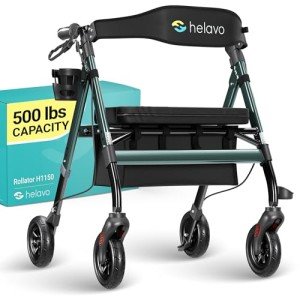The Benefits of Non-Slip Walkers: Enhancing Mobility and Safety for All
As we browse through the varied landscape of mobility aids, one vital product sticks out: the non-slip walker. This necessary tool not just aids those with restricted mobility however also promotes self-reliance and security. In this article, we will delve into the advantages of non-slip walkers, the various types offered, and what features to try to find when choosing the best walker. Along the way, we will answer frequently asked questions and supply insights that enhance understanding of this crucial mobility device.
Why Choose a Non-Slip Walker?
Non-slip walkers are particularly developed with security in mind. Slips and falls can cause serious injuries, specifically for elderly individuals or those recuperating from surgery. Integrating anti-slip features into a walker can drastically reduce the risk of accidents, making it an essential option for anybody in requirement of assistance. Here are a few reasons that a non-slip walker is a deserving financial investment:
- Enhanced Stability: Non-slip grips and rubberized wheels provide exceptional traction on numerous surfaces.
- Improved Safety: The design minimizes the likelihood of slips, providing users self-confidence as they move.
- Increased Independence: Those who might have formerly depended on caretakers can gain back some degree of autonomy.
- Versatile Design: Non-slip walkers can be customized to fit a range of individual requirements and choices.
Types of Non-Slip Walkers
Non-slip walkers can be found in a number of styles, each customized to accommodate various mobility requirements. Below is a comparison table highlighting the most common kinds of non-slip walkers offered:
| Type of Walker | Features | Perfect For | Price Range |
|---|---|---|---|
| Standard Walker | Four legs, lightweight, rubber tips | General use, moderate assistance | ₤ 50 - ₤ 100 |
| Two-Wheeled Walker | Two front wheels, 2 rear legs with rubber tips | People who need assistance but can walk | ₤ 70 - ₤ 150 |
| Rollator | Four wheels, braking system, seat alternative | Active people; offers a rest choice | ₤ 100 - ₤ 250 |
| Knee Walker | Created for individuals with knee injuries | Short-term recovery from leg or foot injuries | ₤ 80 - ₤ 200 |
| Pediatric Walker | Smaller sized size, colorful styles | Kids with mobility issues | ₤ 60 - ₤ 120 |
Aspects to Consider When Choosing a Non-Slip Walker
Choosing the ideal non-slip walker can be an overwhelming task. Here are some factors to remember when deciding:
- User's Weight and Height: Ensure that the walker supports the user's weight and suits their height.
- Type of Surface: Consider where the walker will be mainly utilized (indoors vs. outdoors) to pick an appropriate tire configuration.
- Portability and Weight: If the walker requires to be transported, consider weight and foldability for convenience.
- Adjustability: Look for a walker that can be adjusted to the user's particular height requirements, making sure convenience and security.
- Additional Features: Some walkers consist of features such as built-in seats, storage baskets, or advanced braking systems.
Additional Features of Non-Slip Walkers
While analyzing non-slip walkers, numerous extra features can enhance user experience:
- Ergonomic Grip Handles: Soft and comfortable grips can reduce pressure on the hands.
- Reflective Materials: Adding increased presence can assist those who might be utilizing the walker in low-light conditions.
- Personalized Accessories: Consider options like cup holders, trays, or perhaps oxygen tank holders for added convenience.
- Toughness: Look for walkers built from high-quality materials to make sure lasting usage.
Regularly Asked Questions (FAQs)
1. What is the main distinction between a standard walker and a rollator?
- A standard walker has four legs and needs the user to raise it with each action, whereas a rollator has wheels, allowing the user to press it along more easily.
2. Are non-slip walkers appropriate for outdoor use?
- Yes, numerous non-slip walkers are created for different surfaces. It's vital to pick a model with ideal wheels for outdoor terrain.
3. Can a non-slip walker be utilized by individuals who have had hip or knee surgery?
- Absolutely. Non-slip walkers provide stability and can be vital for those recovering from such surgical treatments.
4. How do I change the height of a walker?
- Many walkers feature adjustable legs that allow you to change the height. Describe the producer's guidelines for specific modification directions.
5. Exists Helavo Rollator Walkers for non-slip walkers?
- Yes, each walker has a specified weight limitation. It is essential to thoroughly inspect this information before acquiring to guarantee security.
6. Can I use a non-slip walker in shops or public places?
- Yes, non-slip walkers are created for use in different environments. Simply make sure the design you pick is maneuverable enough for confined areas.
Buying a non-slip walker can supply users with boosted mobility, confidence, and independence. The range of designs and features readily available enables users to choose a walker that best fits their distinct needs. By thinking about factors such as weight capability, adjustability, and additional features, one can make sure that they or their loved ones are safe and comfortable.
For those seeking to restore their independence, non-slip walkers not only aid in mobility but also contribute to a more active lifestyle. If you or somebody you know might take advantage of a non-slip walker, put in the time to explore the options available-- your journey towards increased security and autonomy begins here!

